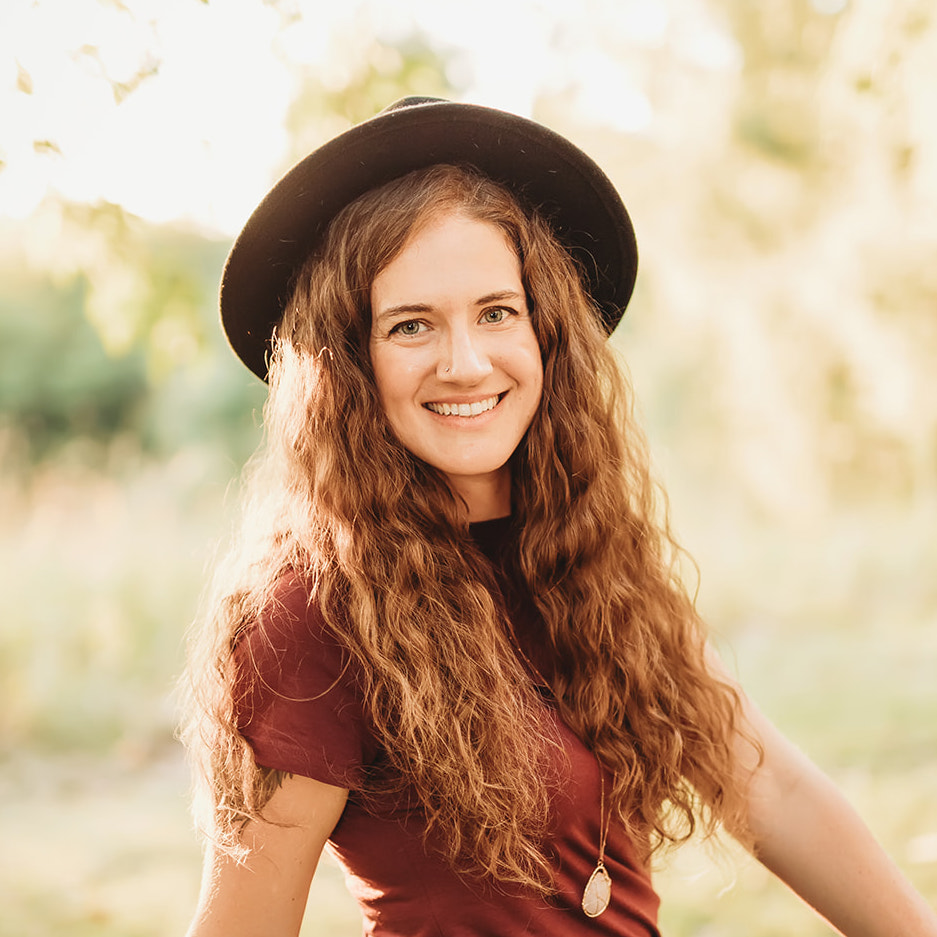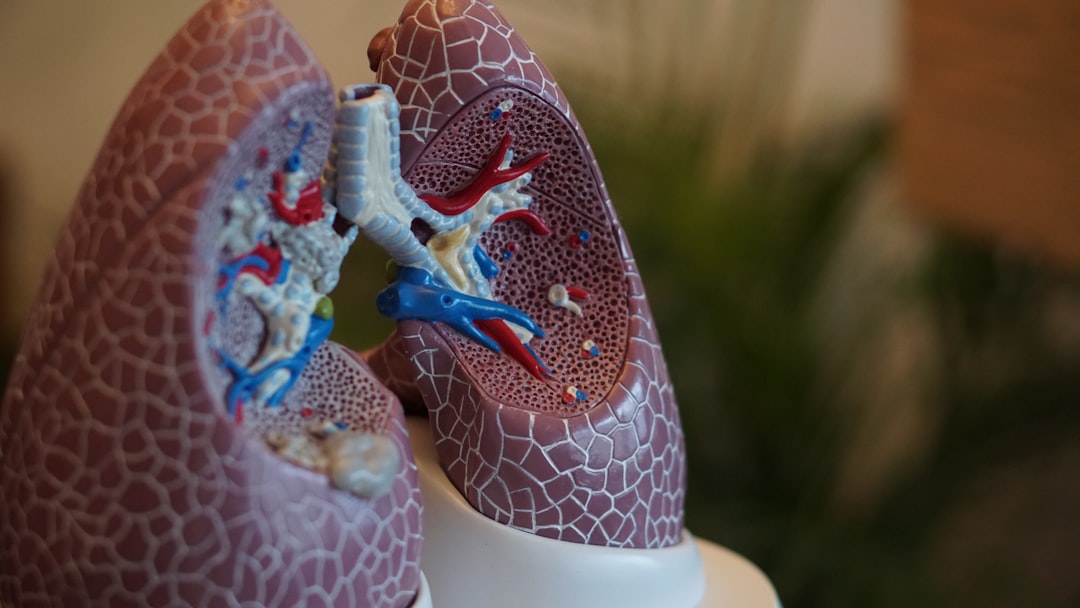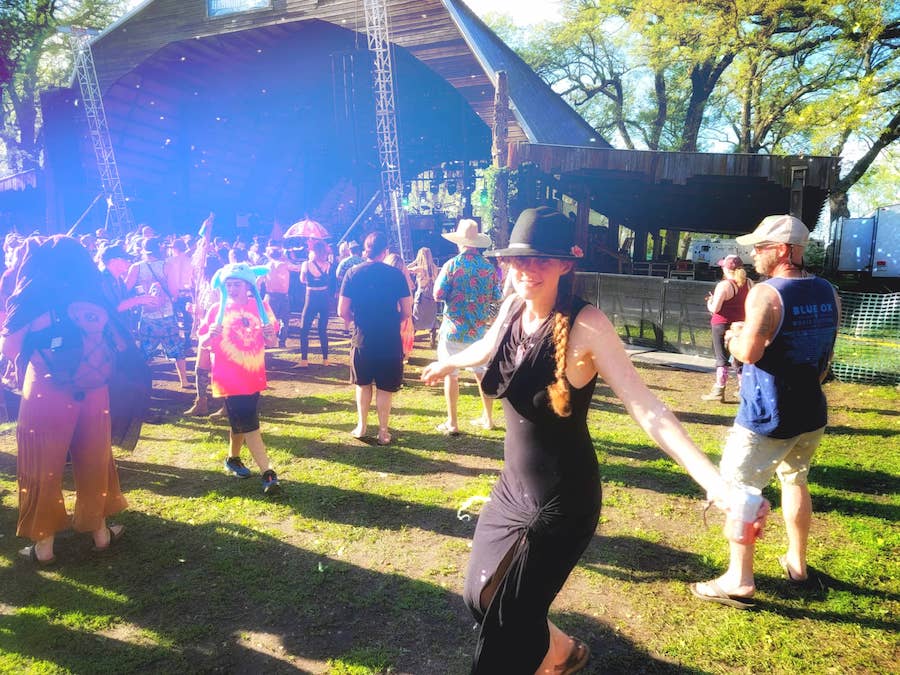Healing with Yoga Runs Deep: A Journey in Yoga Therapy

Yoga is so much more than just fitness.
The rich history of the practice goes back over 5,000 years and evolved extensively through time and cultures. In the west, we see mostly the physical side, or the Asanas, meaning postures.
But yoga's healing potential runs much deeper than just the physical. Yoga is truly a mind-body experience, utilizing meditation and breath practices to reconnect the mind and body and spirit.
Historical yogic texts talk about things like Karma and Dharma, or following your purpose in life. Practicing yoga can bring you to a space called Samadhi, or the ultimate self-realization when you feel totally in connection with all that surrounds you.
With this ancient practice, people are able to work through things like anxiety, PTSD, depression, and perhaps even link them back to physical issues in their bodies. The practice of yoga has helped many people find their purpose in life, and for others, it's helped them simply connect with their own feet on the ground.
Caitlin Holleron and I met as freshmen in college, long before either of us began our journeys into the world of healing. She began teaching yoga in 2014 and since 2018 has been working her way through a program at Kripalu Center for Yoga and Health in Western Massachusetts for what’s known as yoga therapy.
Yoga therapy is applying the specific tools of yoga, including the postures, breathwork (Pranayama), meditation, and more, to help people with their individual mental, emotional, physical, and spiritual needs. Kripalu’s program offers a wide lens to train their practitioners to deal with many specific needs and health conditions.
Caitlin is focusing on working with those who struggle with mental health; many of her clients are dealing with conditions like stress, anxiety, and PTSD. She has colleagues in the program that work with clients ranging from veterans to children in underprivileged areas to the elderly and the caretakers of the elderly.
She chose mental health because it’s the area she has been most personally affected by, as well as gained the most from the practice of yoga.
The journey here.
Caitlin received her 200-hour RYT certification through Radiant Power Yoga in Boulder, Colorado, the foundation of the yoga teacher path.
“I did it because I was in love with yoga and wanted to go deeper down that path, but I never thought I would teach yoga,” she said. “About 6-months after teacher training, I got this call to actually go and teach yoga. I taught for 3 years in hot power studios, and wanted to expand my reach to a wider scope of people who could benefit from what this practice could offer.”
Initially, she was going to pursue the 300-hour (the next step up from the 200-hour program) but ended up finding the yoga therapy program at Kripalu instead.
When she started the program in August of 2018, she wasn’t an experienced teacher, which she noted was one of the bigger obstacles to work through. The program consists of 8 in-person modules of 10-14 intensive days each, and 150 practicum hours, which includes working with people one on one, in group settings, and completing documentation.
When COVID hit, she had one more in-person module to go, so since then, has been focusing on working through the practicum hours and documentation.
“It’s a process, for sure, which is why I wish I’d had my 500-hour teacher training and more years of teaching under my belt before I embarked on that quest, but I’ve been learning as I go.”
The pandemic offered a break in her training, allowing her to expand on her teaching, gaining more of that experience she felt she needed, and work through the practicum hours more deeply in a way that wasn’t available before. She’s also had the opportunity to expand on the knowledge that’s carrying her down her own life path.
When we chatted, she Zoomed in from Tzununa on Lake Atitlan Guatemala, having just completed a course through the Fungi Academy. as well as Permaculture course through Groundwork.
Inspiration.
“I wanted to go save the world,” she explained...
“By the time I was out of college [at the University of Denver], I was like, I need to heal myself. I can’t heal anybody until I can heal myself. I can’t affect change on the global scale until I can find healing, which is hard to do.”
Healers often get into healing because they embark on a deep journey to heal themselves first.

revivified thoughts.
Caitlin was inspired to get into yoga therapy after struggling with her own mental health.
After college, she was living in Telluride, Colorado, working in the cannabis industry, and was overall unhappy. She was working her butt off just to afford the cost of living; she resided in one of the most beautiful, awe-inspiring places but felt she couldn’t enjoy it because she spent all her days in a toxic work environment.
Then one day she asked herself, “if money was no object, what would I do?” With that, she decided she wanted to do yoga all the time.
From that point, she found the yoga therapy program at Kripalu to expand on her yoga career. Things around her life in Telluride began to fall away, which was a painful process but ultimately led her down her intended path.
Yoga therapy, she figured, would give her the skills she needed to build a real business around yoga that wasn’t just teaching a million classes, attempting to piece together an income.
About yoga therapy.
In yoga therapy, the framework practitioners work with is based on what are called the Koshas (Sanskrit for sheath or layers).
The five Koshas are…
- Annamayakosha, the sheath of food (the body that is sustained by food and becomes food)
- Pranamayakosha, the sheath of vital airs (breath)
- Manomayakosha, the sheath of mind (thoughts/conscious thought and will)
- Vinjamayakosha, or the sheath of casual intellect (judgment, discernment)
- Anandamayakosha, sheath of bure bliss, (spirit or connection with the divine)
“The way I like to break it down for people is that we are not a one or two or three-dimensional human being, we are multidimensional beings,” she said. “The idea that really inspired me behind yoga therapy is that this practice is facilitating bringing all the layers, or Koshas, to balance and cohesion. When they are in balance is when we experience optimal health.”
Many yoga therapists start by looking for imbalances in the Manomayakosha. In western medicine, the mind and body are viewed as separate, but from a yogic perspective (as well as other holistic therapies), the mind and body are one. The body is a physical manifestation of the mind, so disruptions in the mind are thought to lead to issues and dis-ease in the physical body.
Take digestive issues for example. How might digestive issues be manifested because of a disruption in the Manomayakosha?
Even based on western medicine, we know that the gut holds serotonin and dopamine. Gut disorders, including imbalances with the gut microbiome, have been known to lead to issues like depression, anxiety, and other psychological issues.
From a yogic perspective, the Solar Plexus Chakra, which is associated with emotions like self-confidence, happiness, and joy, is also situated next to the pancreas (each chakra is aligned with a different organ in the endocrine system). The pancreas produces digestive enzymes and insulin, as well as other hormones that help in the digestive process.
Yoga therapy works to bring balance to people’s lives through working with the entire being of each client, physical, emotional, and spiritual. Western medicine often just looks at symptoms, treating one thing at a time, whereas more holistic treatments (holistic literally stems from the word “whole”) such as yoga therapy look at the entire picture.
If a client comes to Caitlin and is struggling because nothing in life brings them any joy, then she’d be able to figure out what Kosha is out of whack, and utilize a customized yoga practice to bring the Koshas back into balance.
“Yoga means to yoke, or to bring in union,” she said. “That’s another one of the reasons I’m inspired by the mushroom world because it’s showing us that everything really is connected.”
Like the extensive mycelial networks that web together just under the surface of the earth, connecting entire forests to themselves in more profound ways than we could even imagine, yoga sees individuals as deeply interconnected beings, each piece of ourselves webbing to the other parts, then to the universe as a whole. What happens in our bodies is deeply intertwined with our minds, our emotions, our pasts, and our presence.
A yoga therapy session.
“Oftentimes, our physical symptoms are a reflection of something deeper that is going on within our psyche. Yoga therapy can help us access the body in a way that releases the old patterns, conditioning, and trauma that are causing disease.”
Caitlin and I met on Zoom for my yoga therapy session one January morning, the world outside my office engulfed in sub-zero temperatures, the beautiful Guatemalan sunshine where she was at sending some sort of peaceful, healing vibes through my computer.
A typical intake for yoga therapy is extensive. “We get deep,” Caitlin explained before my session.
We talked for close to an hour before we got into doing any yoga. We went over health history, personal history, illness, injury, then diving into the more nitty-gritty.
What are my wellness goals? Where am I at mentally? Emotionally? What drove me to reach out to her after a Facebook post calling for practice clients a couple of months earlier?
So much of my anticipation and expectations shifted from the time I reached out for the session to our live intake conversation.
First, it was my hips and neck, the musculoskeletal things I deal with in my body day-to-day. A lingering tight spot deep in my right hip that one chiropractor thought may have been a deformity in my acetabulum (the socket of the ball-in-socket that is your hip joint), but after an x-ray confirmed my joint was normal, I was left wondering what was wrong with it.
Stiffness in my neck seems to consistently act up in early winter year after year was another issue I brought up.
“It’s not like going to the doctor,” Caitlin explained, “where they may be like ‘oh, you have a sore throat, take this.’ Let’s talk about what you’re going through and build something around it.” Doing grounding helps her clients find where they are at in the current moment.
As we talked about the musculoskeletal issues I’d brought to the table, we drew a connection between neck stiffness and three (almost) back-to-back car accidents I was in in high school which left me with horrible symptoms of whiplash. After complaining about the pain I was in for so long, I was given an MRI and told, “nothing is wrong with you.” It took six years to find chiropractic from there, but still, at the onset of winter, I get prone to neck stiffness.
I still feel how frustrated I was trying to tell my parents, doctors, anybody that my body hurt, and continuously being told that nothing was wrong. Not only had the whiplash affected the structures of my neck and back, but feeling like nobody was hearing me likely affected me energetically as well.
We also talked about the emotionally turbulent year I’d had prior to our meeting: Losing three friends unexpectedly in the middle of a global pandemic, living near Minneapolis as the world watched it burn in 2020, and realizing throughout the year that I really didn’t have the coping skills for it all. How do you even deal with all that? How do you accept reality, stay present, and take action when everything around you seems so destructively tumultuous?
Yoga therapy is really a co-creative process. The intake felt much more like a conversation than it did a formal question-and-answer process.
The scope of what yoga therapy (and yoga practice in general) can offer goes much further past the physical side of it that we are most familiar with in the west...
When we got to the part where we adjusted our webcams and started the Asanas (or postures), Caitlin had developed a wide spectrum of things that included breathwork (Pranayama), and Mudras, or hand-gestures. She focused on mostly restorative and Nidra for me, but this part would be as unique as each individual she works with.
For the Pranayama, or breathwork, Caitlin taught me what is called Bhramari Pranayama, or Humming Bee Breath, accompanied by a Garuda Mudra, a hand gesture that balances out excess Vata (the element of air), which can cause things like racing thoughts or anxiety.
Garuda Mudra involves hooking the thumbs together with the hands crossed, placing the thumbs just over the throat chakra. The Humming Bee Breath involves making a slow steady hum on an exhale, like a bee, so the vibration can be felt through my throat and into my hands.
Talking through what I’d gone through in the last year prior to a yoga session helped me process things in a different way.
For most of my life, I had learned to internalize struggles, and I’ve always had a hard time expressing myself when I’m going through difficult emotions. Talk therapy has helped, and I found even talking to Caitlin about a lot of this helped open up energetic lines of communication inside me that I didn’t know had been so shut off.
The Mudra and Pranayama we did, which was so focused around energy in my throat chakra, caused me to see a flash of bright blue coming out of Shavasana (or resting pose done at the end of yoga). Communication has always been something I struggle with, and through this, talk therapy, and other processes I’ve been using to help myself heal, I feel my ability to communicate widening each day.
As for homework, sometimes it’s as simple as repeating a mantra every day. Sometimes, it’s using a Mudra. For women who have frustrations around diet, she encourages them to keep a food journal; although she does state she isn’t a dietician or nutritionist, food journaling is a way to bring awareness to what goes in the body and how it may make you feel.
“There is always the caveat of ‘this isn’t intended to replace any forms of medical treatment or therapy,’' she explains, a necessity of any alternative or complementary healing modality. “I can't treat or diagnose anything, but I am here to be another tool in the toolbox. I don’t claim to be any sort of healer, I’m just trying to point people back to themselves and empower them to remember that they do have the ability to be their own healer.”
Healing often takes many approaches, trial and error, and, of course, time and patience. To me, a good healer brings out in you what you already know inside. They give you tools to heal yourself. A massage therapist may loosen up a tight muscle, but what are you going to do with that newfound range of motion and lack of pain? Bodies are meant to move. You do the rest from there.
The Future.
At the beginning of last year, Caitlin began putting together a big picture of what she wanted her future in yoga therapy to look like.
She began a process of microdosing (taking small, sub-perceptual amounts of psychedelics, a practice that has been popularized in the last couple of years). For her, it allows space between anxious thoughts and rumination. It’s a process that many who struggle with anxiety and depression say is immensely helpful.
One day, she thought, what would it be like to consciously partner a microdosing protocol with a yoga therapy practice?
Yoga therapists have the tools of Ayurveda, so they will often prescribe Ayurvedic herbs or lifestyles to help their clients find balance and healing.
Caitlin began exploring the idea of putting on retreats to help her clients go deeper, creating a container together to work through the limbs of yoga. The retreats would also involve breathwork practices, meditation, physical practices, and working with the chakras. Her recent course at the Fungi Academy has equipped her with more knowledge and tools that she can carry along this path and unite with yoga therapy one day.
“It’s an idea that’s still brewing, but I’m planning to somehow weave together all of these realms of interest in my life because I see them not as separate, but as interconnected. The more we can be in this place of unity within ourselves and the world around us, the more we can find balance, wellness, the ecology of the world, to bring about healing within ourselves as well as global healing. Our illness is affecting the planet and vice versa, the planet’s illness is being reflected in the ill health of society.”
“I thought it was interesting, I was in the midst of this training when the pandemic hit. Something told me to go take these tools to help people who are afraid, alone, separated… It’s been such a beautiful exchange to do this through Zoom, and the response has been incredible.”
Caitlin is still building her business, which will be linked here when it is up and ready. For now, if you would like to inquire about yoga therapy, you can email her at caitlin.holleron [at] gmail.com.












If you enjoyed this article or recipe, please consider giving it a comment! It helps others discover my blog and recipes, and your comments always make my day :) Thank you for your support!
Your email address will not be published. Required fields are marked *
1 comments on Healing with Yoga Runs Deep: A Journey in Yoga Therapy
Relatable. ✨ I have a chaotic mind, I can't calm it. But, once I do meditation it calms down. I plan on doing yoga, once I moved out. This content will help a lot who seeks self healing.